Methods for Accelerating Physical Salt Attack on Cement-Based Materials in Laboratory Testing: Effects of Curing Age and Water-to-Cement Ratio
Abstract
1. Introduction
2. Materials and Methods
2.1. Materials
2.2. Experimental Settings
2.3. Testing
3. Results
3.1. Influence of Curing Age on the Accelerated PSA Testing
3.1.1. Macroscopic Morphology
3.1.2. XCT Analysis
3.1.3. SEM Analysis
3.2. Influence of Water-to-Cement Ratio on PSA
3.2.1. Visual Morphology Analysis
3.2.2. XCT
3.2.3. SEM
3.3. Mechanism
4. Discussion
5. Conclusions
- (1)
- Specimens with shorter curing ages and higher water-to-cement ratios exhibited accelerated deterioration behavior. By adjusting the curing age and water-to-cement ratio, the PSA deterioration time of specimens in NaCl solution was reduced by 25–50%. Importantly, the SEM analysis revealed that despite these variations in curing age and water-to-cement ratio, the fundamental deterioration mechanisms remained consistent across all the specimens. These findings demonstrate that adjusting the curing age and water-to-cement ratio of cement-based materials constitutes an effective strategy for enhancing the efficiency of accelerated PSA testing in laboratory environments. Implementation of this methodology enables significant reductions in both time requirements and economic costs associated with cement-based material selection for PSA resistance and preliminary durability evaluation.
- (2)
- Adequate curing is crucial for enhancing the early resistance of cement-based materials to physical salt crystallization attack. In practical engineering, particularly for concrete structures in coastal environments, a sufficient curing age is better ensured (at least reaching 28 days of curing) to prevent structures from being exposed to salt erosion environments during early stages when strength is insufficient and porosity is high, thereby effectively delaying the occurrence of cracking failure.
- (3)
- Local crystallization behavior on specimen surfaces during NaCl attack is directly related to macroscopic damage. Monitoring external crystallization distribution patterns can predict potential deterioration locations, providing reliable visual indicators for PSA service life assessment.
- (4)
- It is worth noting that the main conclusions of this study are based on cement paste specimens. When considering PSA on cement-based materials containing aggregates, such as mortar or concrete, the additional effects of PSA on the interfacial transition zone (ITZ) must be taken into account to comprehensively evaluate the overall impact of PSA on these materials, and this will be our future work.
Author Contributions
Funding
Data Availability Statement
Conflicts of Interest
References
- Sakr, M.; Bassuoni, M.; Hooton, R.; Drimalas, T.; Haynes, H.; Folliard, K. Physical salt attack on concrete: Mechanisms, influential factors, and protection. ACI Mater. J. 2020, 117, 253–268. [Google Scholar] [CrossRef]
- Jiang, X.; Mu, S.; Liu, J. Influence of chlorides and salt concentration on salt crystallization damage of cement-based materials. J. Build. Eng. 2022, 61, 105260. [Google Scholar] [CrossRef]
- Thaulow, N.; Sahu, S. Mechanism of concrete deterioration due to salt crystallization. Mater. Charact. 2004, 53, 123–127. [Google Scholar] [CrossRef]
- Niu, L.; Gao, S.; Guan, J.; Li, L.; Qian, J. Impact of Salt Crystallization on the Mechanical Properties of Masonry. J. Mater. Civ. Eng. 2025, 37, 04025120. [Google Scholar] [CrossRef]
- Alam, M.; Islam, M.; Islam, M. Effect of Pre-curing on Strength Development of Brick Aggregate Concrete in Sea Water Environment. In Advances in Civil Engineering: Select Proceedings of ICACE 2020; Springer: Singapore, 2022; pp. 255–266. [Google Scholar]
- Kong, D.; Xu, L.; Wu, H.; Zeng, F.; Zhou, Y.; Gu, C. Effect of admixture on the properties of marine HPC under crystallization of chloride salt. J. Zhejiang Univ. Technol. 2024, 52, 479–486. [Google Scholar]
- Zanqun, L.; Xiangning, L.; Le, H.; Binlin, S.; Jianhua, D. Accelerating effect of fly ash on damage of concrete partially immersed to sulfate environment. J. Build. Mater. 2017, 20, 439–443+448. [Google Scholar]
- Zhanqun, L.; Min, P.; Fengyan, Z.; Dehua, D. Comparison of chemical attack products in different zones of cement paste partially immersed in Na2SO4 solution. J. Build. Mater. 2020, 23, 485–492. [Google Scholar]
- Lubelli, B.; Cnudde, V.; Diaz-Goncalves, T.; Franzoni, E.; van Hees, R.P.; Ioannou, I.; Menendez, B.; Nunes, C.; Siedel, H.; Stefanidou, M. Towards a more effective and reliable salt crystallization test for porous building materials: State of the art. Mater. Struct. 2018, 51, 55. [Google Scholar] [CrossRef]
- Sakr, M.; Bassuoni, M. Performance of concrete under accelerated physical salt attack and carbonation. Cem. Concr. Res. 2021, 141, 106324. [Google Scholar] [CrossRef]
- Jiang, X.; Mu, S.; Guo, Z.; Liu, G. Effect of temperature on the physical salt attack of cement mortars under repeated partial immersion in sodium sulfate solution. Materials 2022, 15, 6234. [Google Scholar] [CrossRef]
- Newtson, C.; Mousavinezhad, S.; Toledo, W.; Aguayo, F. Accelerated Sulfate Attack Testing for Concrete. 2023. Available online: https://repository.lsu.edu/transet_pubs/155 (accessed on 5 August 2025).
- Bassuoni, M.T.; Rahman, M. Response of concrete to accelerated physical salt attack exposure. Cem. Concr. Res. 2016, 79, 395–408. [Google Scholar] [CrossRef]
- Qin, J.; Jiang, J.; Tao, Y.; Zhao, S.; Zeng, W.; Shi, Y.; Lu, T.; Guo, L.; Wang, S.; Zhang, X. Sunlight tracking and concentrating accelerated weathering test applied in weatherability evaluation and service life prediction of polymeric materials: A review. Polym. Test. 2021, 93, 106940. [Google Scholar] [CrossRef]
- Flatt, R.J. Salt damage in porous materials: How high supersaturations are generated. J. Cryst. Growth 2002, 242, 435–454. [Google Scholar] [CrossRef]
- Scherer, G.W. Stress from crystallization of salt. Cem. Concr. Res. 2004, 34, 1613–1624. [Google Scholar] [CrossRef]
- Coussy, O. Deformation and stress from in-pore drying-induced crystallization of salt. J. Mech. Phys. Solids 2006, 54, 1517–1547. [Google Scholar] [CrossRef]
- Chen, Z.; Zou, H.; Liu, Y.; Gai, J.; Basquiroto de Souzae, F.; Sagoe-Crentsil, K.; Neild, A.; Duan, W. Crystallization of sodium sulfate in two-dimensional interconnected pore system: Insights into localized, transient, and anisotropic stress generation and material deterioration. Phys. Rev. Appl. 2024, 22, 034065. [Google Scholar] [CrossRef]
- Abuzeid, M. Physical Salt Attack on Concrete: Field Case Study and Innovative Mitigations. Master’s Thesis, University of Manitoba, Winnipeg, MB, Canada, 2022. [Google Scholar]
- Gonçalves, T.D. Salt Crystallization in Plastered or Rendered Walls. Ph.D. Thesis, Universidade Técnica de Lisboa, Lisbon, Portugal, 2007. [Google Scholar]
- Haynes, H.; O’Neill, R.; Neff, M.; Mehta, P.K. Salt Weathering of Concrete by Sodium Carbonate and Sodium Chloride. ACI Mater. J. 2010, 107, 258–266. [Google Scholar] [CrossRef]
- Rodriguez-Navarro, C.; Doehne, E. Salt weathering: Influence of evaporation rate, supersaturation and crystallization pattern. Earth Surf. Process. Landf. 1999, 24, 191–209. [Google Scholar] [CrossRef]
- Steiger, M. Crystal growth in porous materials—I: The crystallization pressure of large crystals. J. Cryst. Growth 2005, 282, 455–469. [Google Scholar] [CrossRef]
- Kunlin, M. Mechanism and Evaluation Method of Salt Crystallization Attack on Concrete. Ph.D. Thesis, Central South University, Changsha, China, 2009. [Google Scholar]
- Yang, H.; Liu, W.; Yu, H.; Wang, W.; Ma, H. Study on Mass and Performance Deterioration of Concrete Under Multiple Corrosive Environments. Materials 2025, 18, 1931. [Google Scholar] [CrossRef]
- Zhang, F.; Hu, Z.; Wei, F.; Wen, X.; Li, X.; Dai, L.; Liu, L. Study on concrete deterioration in different NaCl-Na2SO4 solutions and the mechanism of Cl− diffusion. Materials 2021, 14, 5054. [Google Scholar] [CrossRef]
- Kliukas, R.; Jaras, A.; Lukoševičienė, O. The Impact of Long-Term Physical Salt Attack and Multicycle Temperature Gradient on the Mechanical Properties of Spun Concrete. Materials 2021, 14, 4811. [Google Scholar] [CrossRef] [PubMed]
- Lubelli, B.A. Sodium Chloride Damage to Porous Building Materials. Ph.D. Thesis, Delft University of Technology, Delft, The Netherlands, 2006. [Google Scholar]
- Gonçalves, T.D.; Pel, L.; Rodrigues, J.D. Influence of paints on drying and salt distribution processes in porous building materials. Constr. Build. Mater. 2009, 23, 1751–1759. [Google Scholar] [CrossRef]
- Tran, D.L.; Mouret, M.; Cassagnabère, F.; Phung, Q.T. Effects of intrinsic granular porosity and mineral admixtures on durability and transport properties of recycled aggregate concretes. Mater. Today Commun. 2022, 33, 104709. [Google Scholar] [CrossRef]
- Peng, L.; Zhiwu, Y.; Lingkun, C. Influence of curing age on properties and micro structure of concrete. J. Build. Mater. 2012, 15, 717–723. [Google Scholar]
- Wei, L.; Feng, X.; Youjun, X. Effect of water to cement ratio and mineral admixtures on the porosity of concrete. Low Temp. Archit. Technol. 2006, 1, 9–11. [Google Scholar]
- GB 748-2005; Sulfate Resistance Portland Cement. Standardization Administration of China: Beijing, China, 2005.
- Sun, H.; Liu, S.; Cao, K.; Yu, D.; Memon, S.A.; Liu, W.; Zhang, X.; Xing, F.; Zhao, D. Degradation mechanism of cement mortar exposed to combined sulfate–chloride attack under cyclic wetting–drying condition. Mater. Struct. 2021, 54, 138. [Google Scholar] [CrossRef]
- Zhang, F.; Wei, F.; Wu, X.J.; Hu, Z.P.; Li, X.G.; Gao, L.L. Study on Concrete Deterioration and Chloride Ion Diffusion Mechanism by Different Aqueous NaCl-MgSO4 Concentrations. Buildings 2022, 12, 1843. [Google Scholar] [CrossRef]
- Chen, S.J.; Ren, J.X.; Ren, X.; Li, Y.G. Deterioration laws of concrete durability under the coupling action of salt erosion and drying-wetting cycles. Front. Mater. 2022, 9, 1003945. [Google Scholar] [CrossRef]
- Shunli, B.; Song, G.; Yaoyao, G.; Jian, C.; Lei, Z. Fractal evaluation of hydration age and admixtures on concrete porosity. Concrete 2023, 1, 13–16. [Google Scholar]
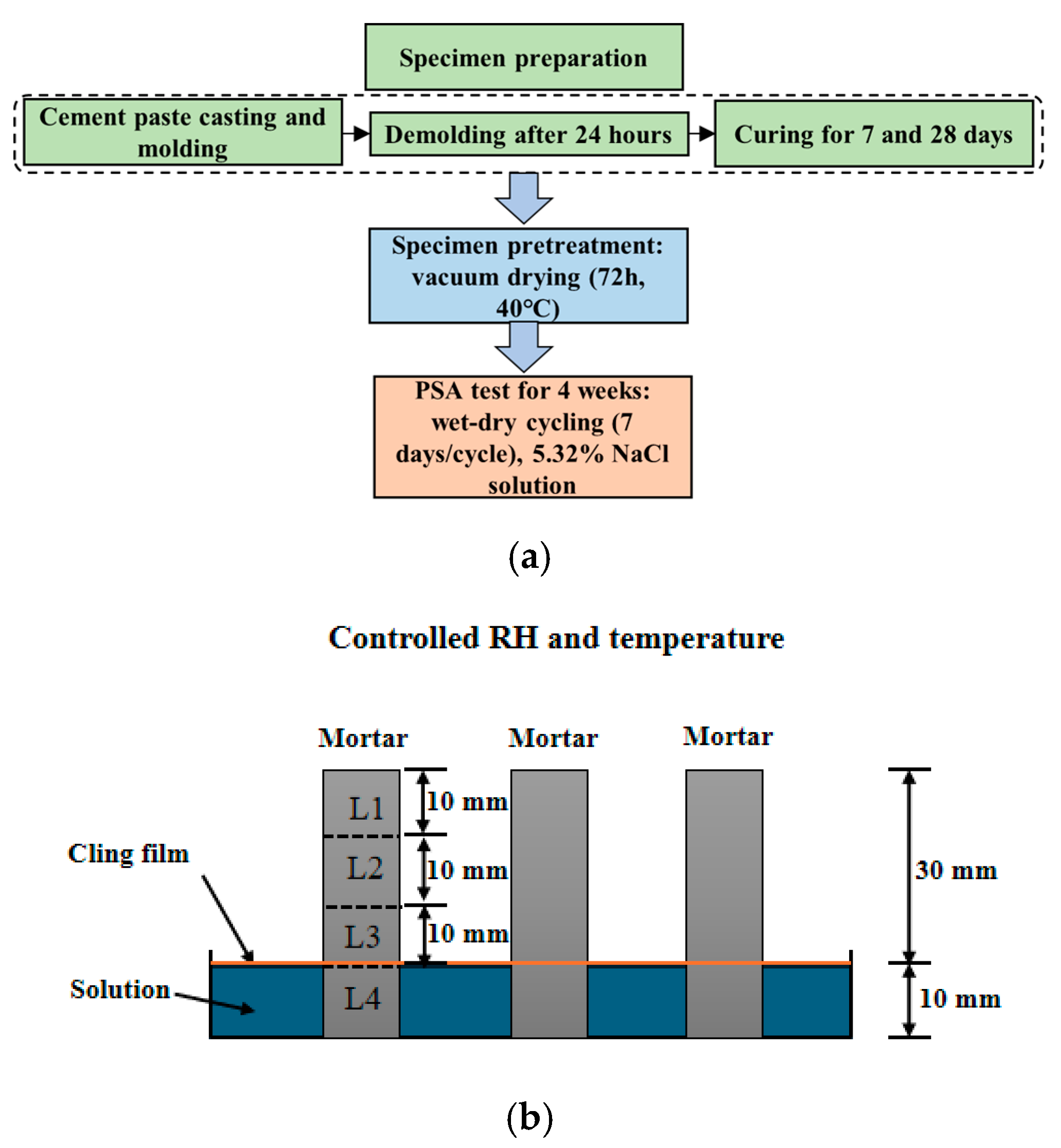
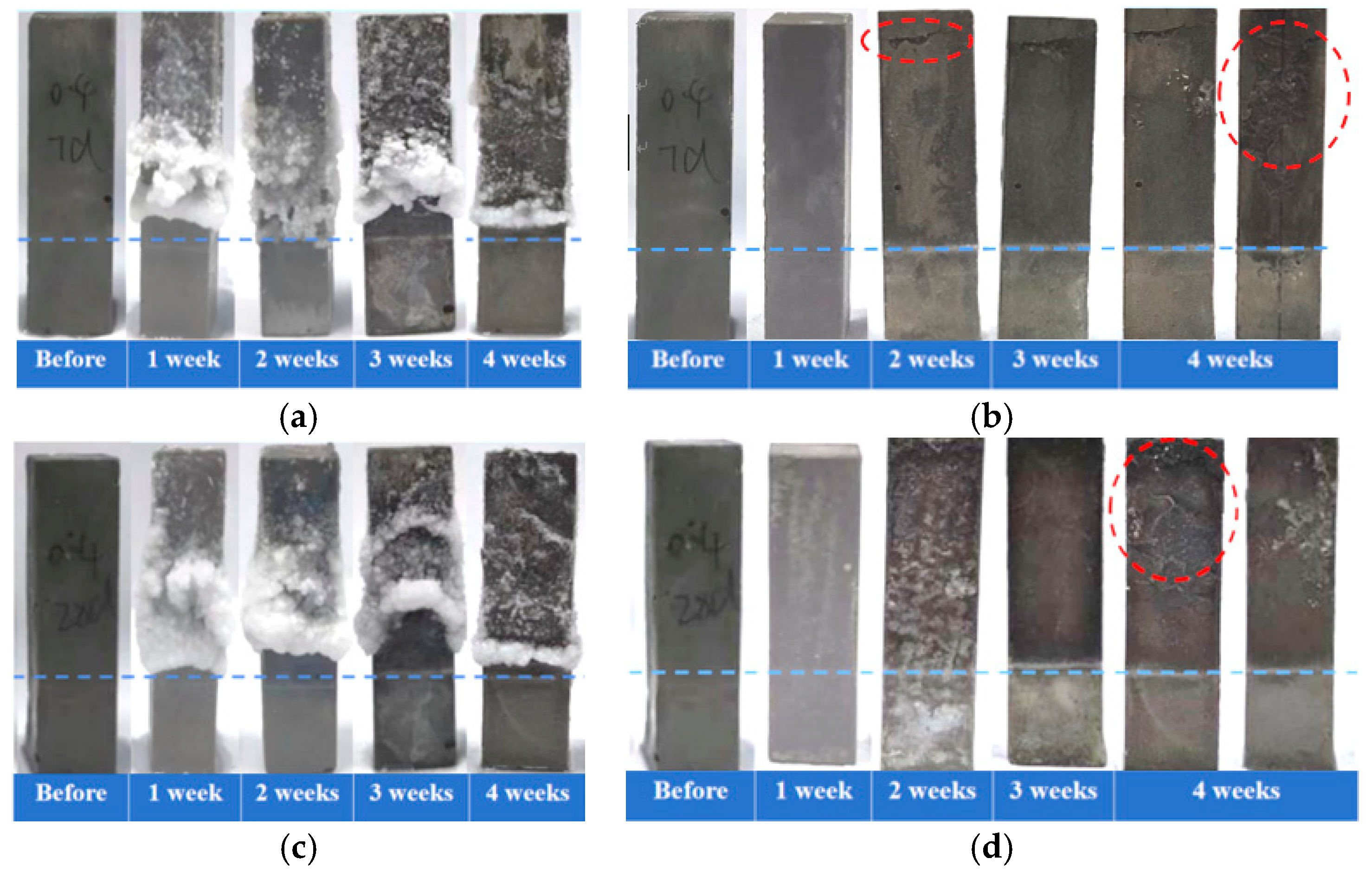
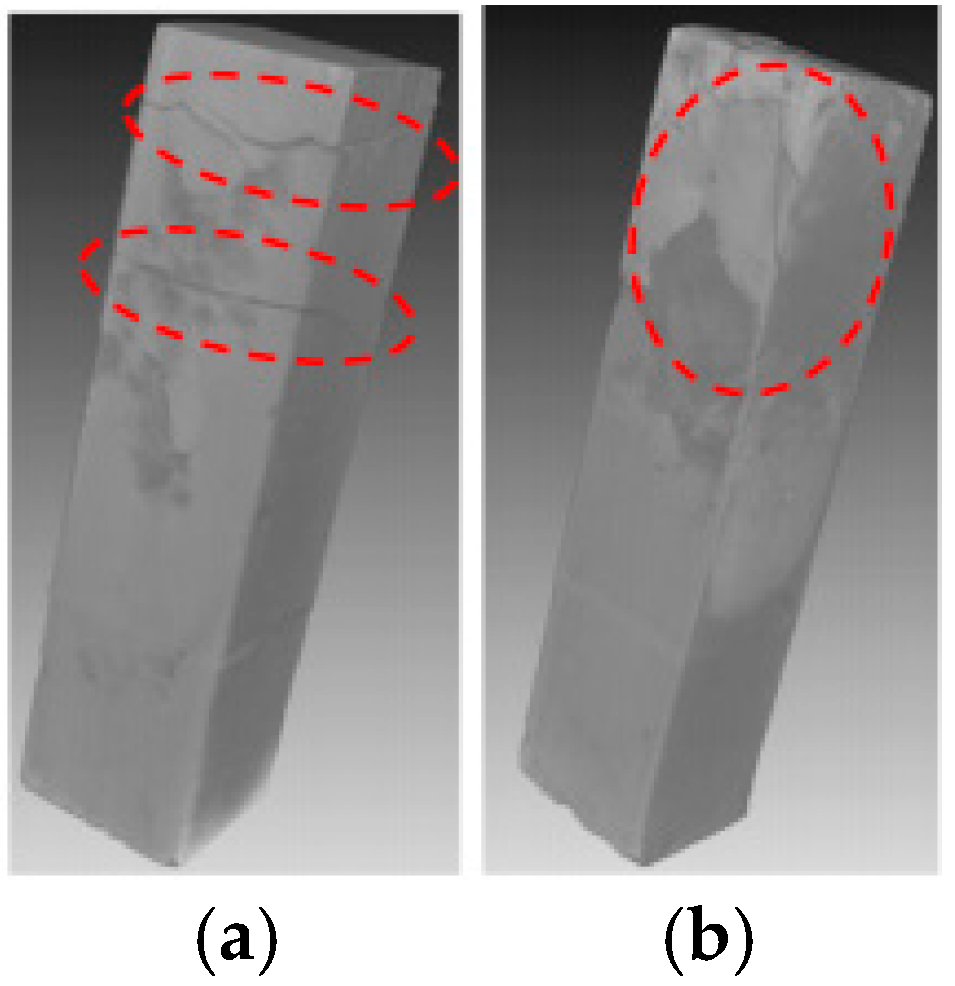
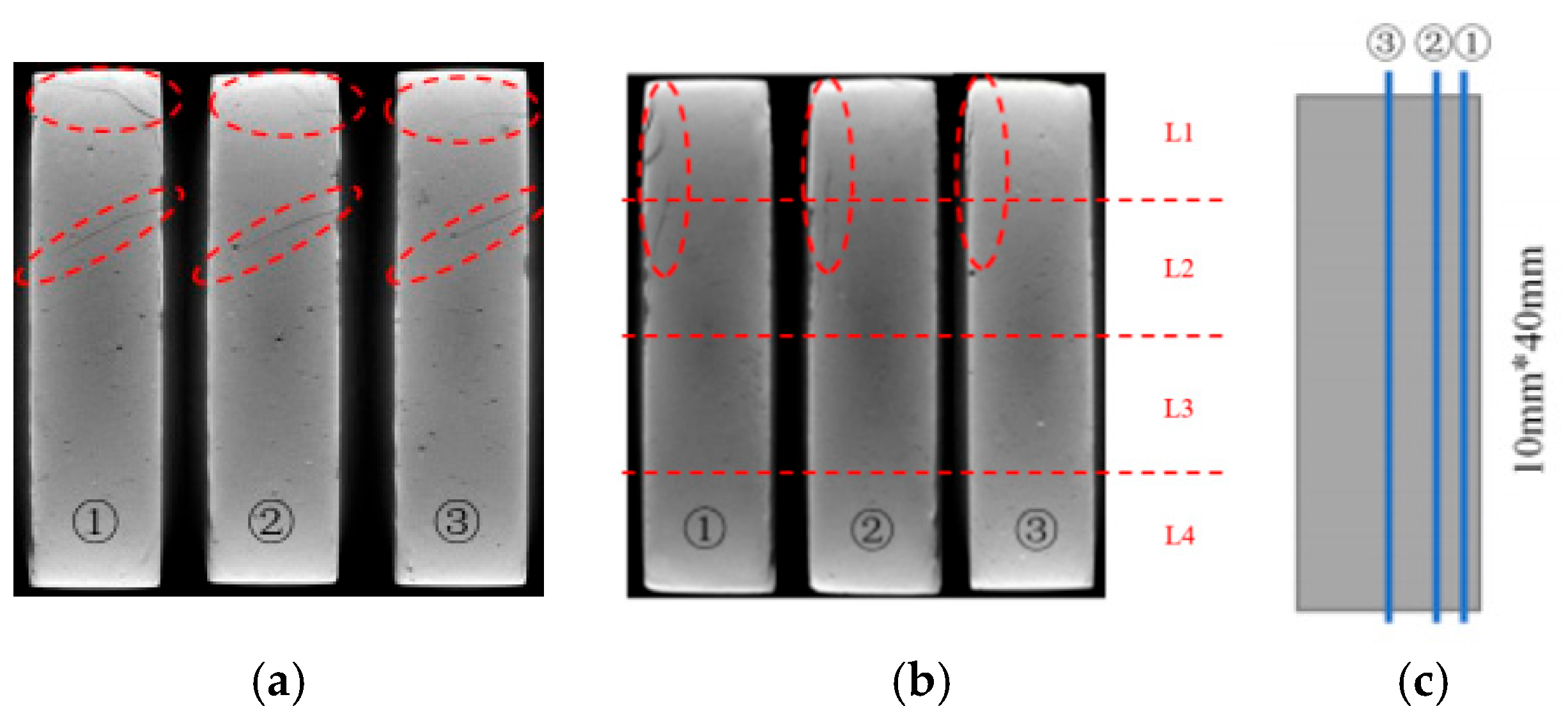

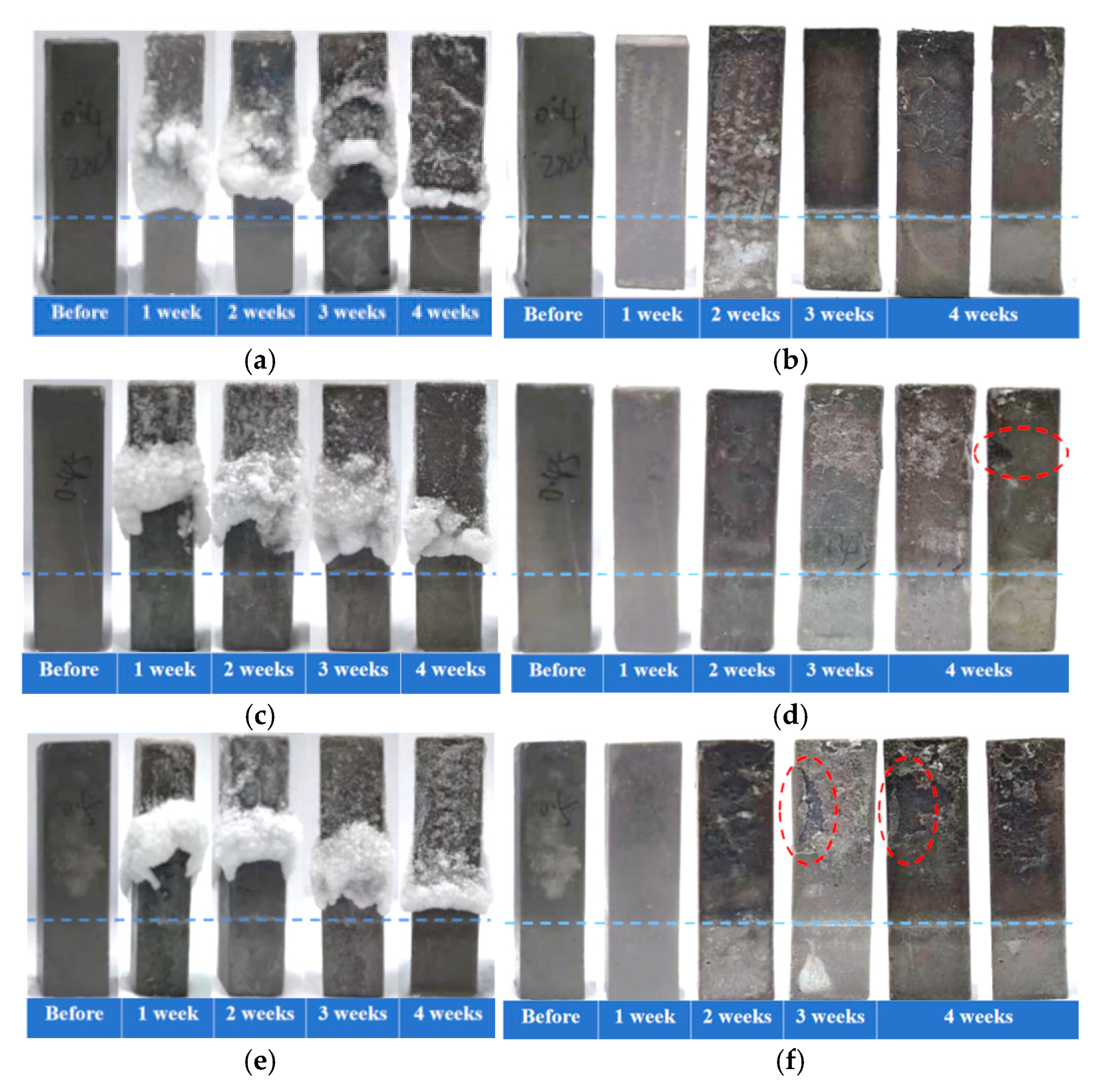
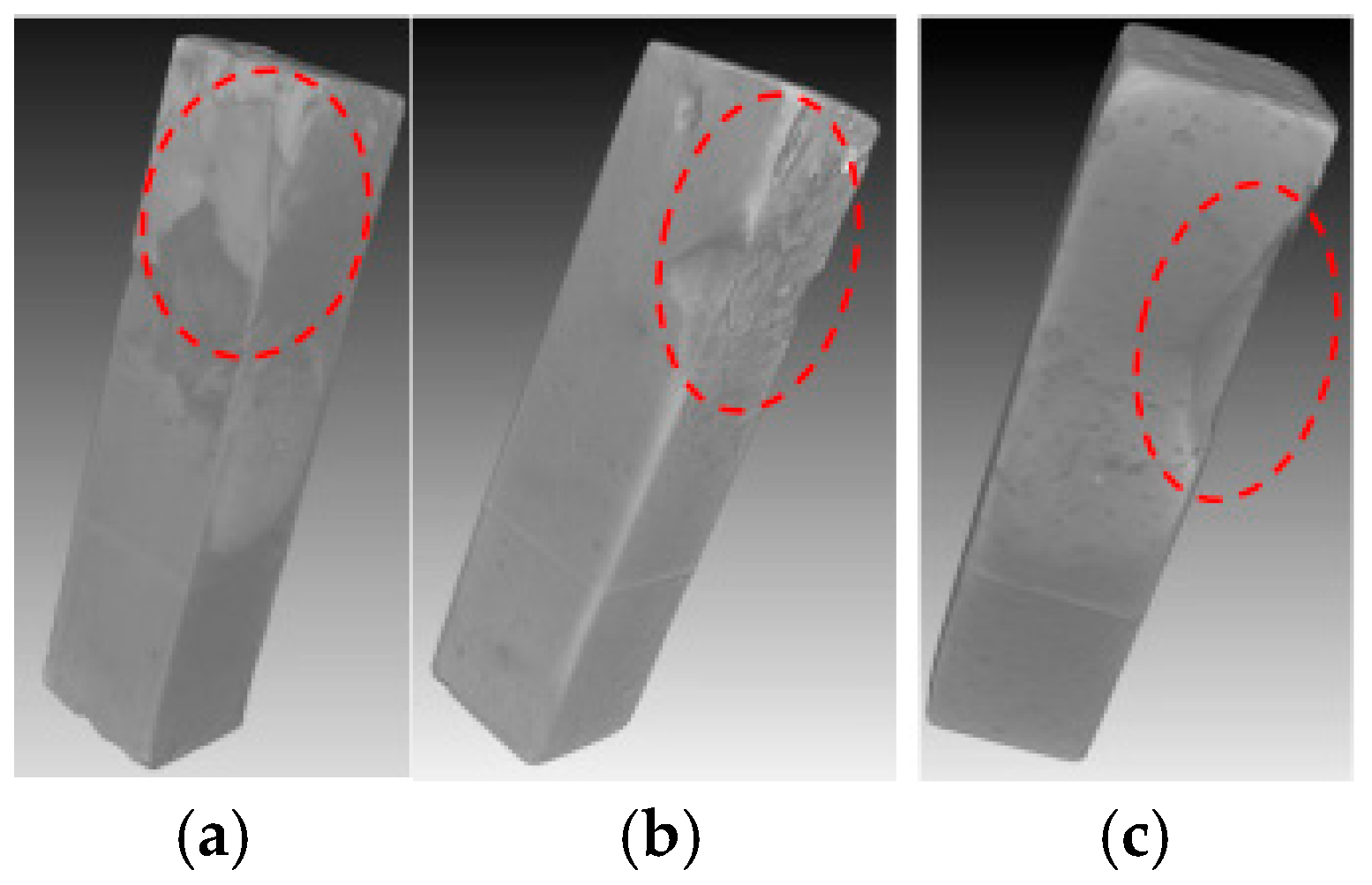
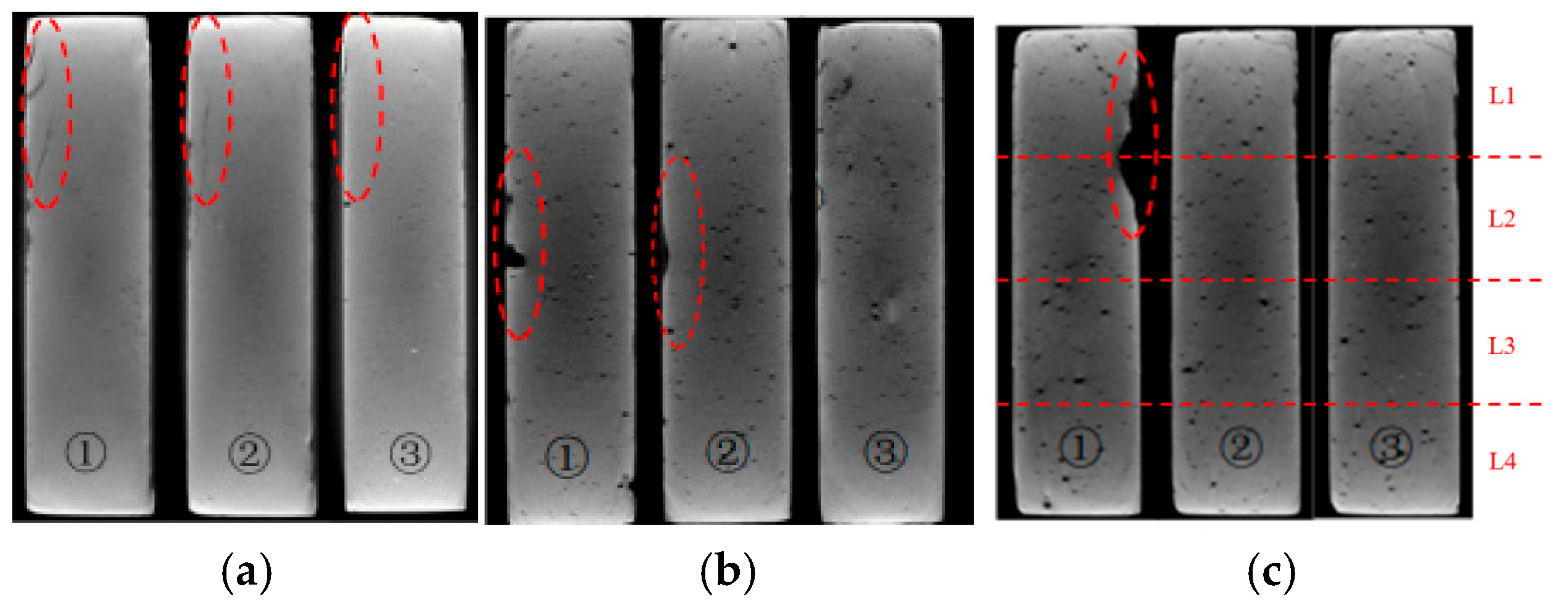

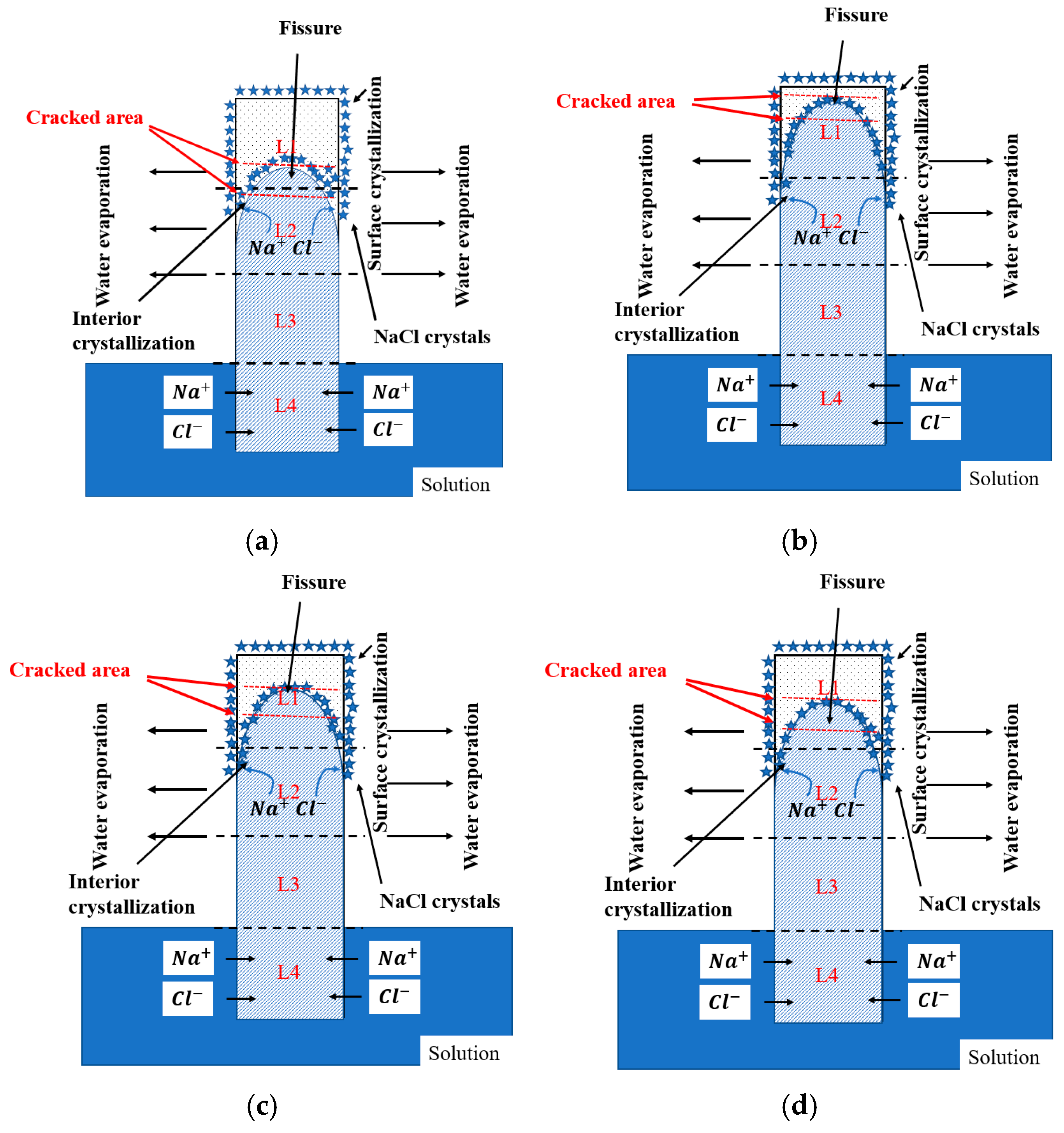
| Oxides | CaO | SiO2 | Fe2O3 | SO3 | Al2O3 | MgO |
|---|---|---|---|---|---|---|
| Concentration (wt%) | 66.51 | 21.2 | 4.62 | 3.3 | 3.1 | 1.27 |
| Time | Day 1 | Day 2–3 | Day 4–5 | Day 6–7 |
|---|---|---|---|---|
| Ambient temperature | 23 ± 2 °C | 50 ± 2 °C | 23 ± 2 °C | 50 ± 2 °C |
| Ambient relative humidity | 50 ± 5% | 20 ± 5% | 95 ± 5% | 20 ± 5% |
Disclaimer/Publisher’s Note: The statements, opinions and data contained in all publications are solely those of the individual author(s) and contributor(s) and not of MDPI and/or the editor(s). MDPI and/or the editor(s) disclaim responsibility for any injury to people or property resulting from any ideas, methods, instructions or products referred to in the content. |
© 2025 by the authors. Licensee MDPI, Basel, Switzerland. This article is an open access article distributed under the terms and conditions of the Creative Commons Attribution (CC BY) license (https://creativecommons.org/licenses/by/4.0/).
Share and Cite
Kang, W.; Liu, S.; Chen, Y.; Yang, S.; Liu, Z.; Wang, Y.; Sun, H. Methods for Accelerating Physical Salt Attack on Cement-Based Materials in Laboratory Testing: Effects of Curing Age and Water-to-Cement Ratio. Buildings 2025, 15, 2836. https://doi.org/10.3390/buildings15162836
Kang W, Liu S, Chen Y, Yang S, Liu Z, Wang Y, Sun H. Methods for Accelerating Physical Salt Attack on Cement-Based Materials in Laboratory Testing: Effects of Curing Age and Water-to-Cement Ratio. Buildings. 2025; 15(16):2836. https://doi.org/10.3390/buildings15162836
Chicago/Turabian StyleKang, Weichen, Shuqin Liu, Ying Chen, Shuren Yang, Zijian Liu, Yaocheng Wang, and Hongfang Sun. 2025. "Methods for Accelerating Physical Salt Attack on Cement-Based Materials in Laboratory Testing: Effects of Curing Age and Water-to-Cement Ratio" Buildings 15, no. 16: 2836. https://doi.org/10.3390/buildings15162836
APA StyleKang, W., Liu, S., Chen, Y., Yang, S., Liu, Z., Wang, Y., & Sun, H. (2025). Methods for Accelerating Physical Salt Attack on Cement-Based Materials in Laboratory Testing: Effects of Curing Age and Water-to-Cement Ratio. Buildings, 15(16), 2836. https://doi.org/10.3390/buildings15162836







